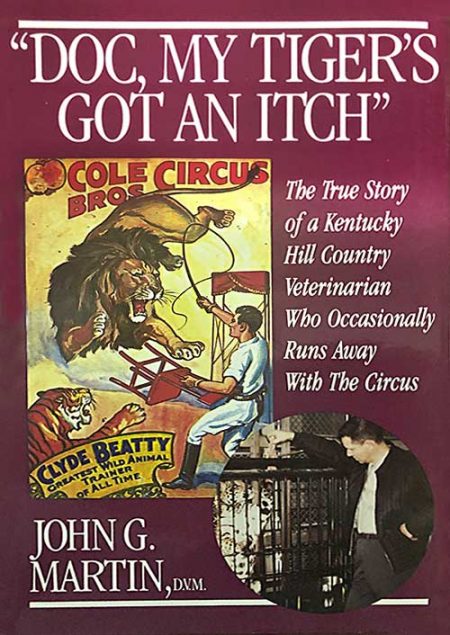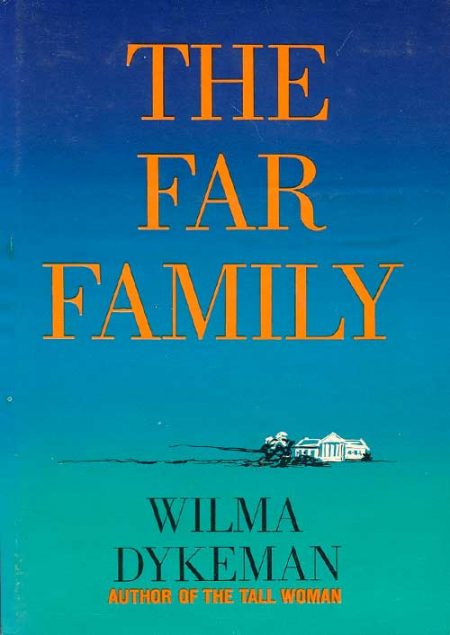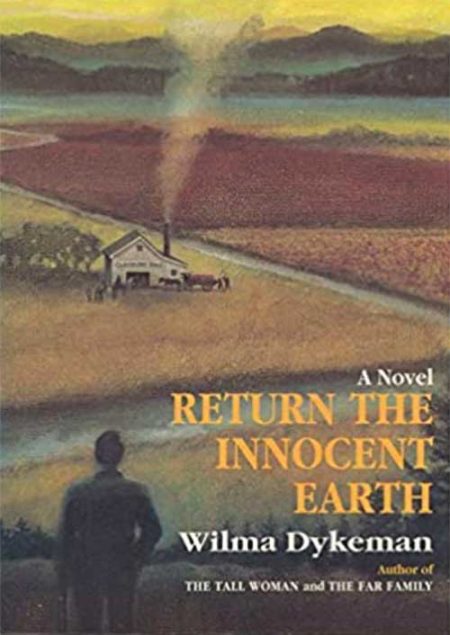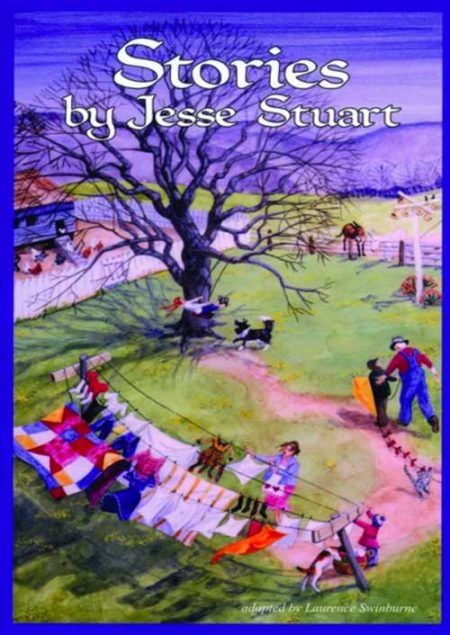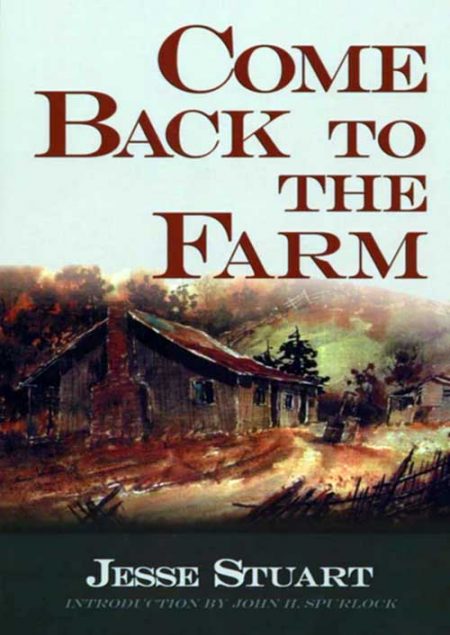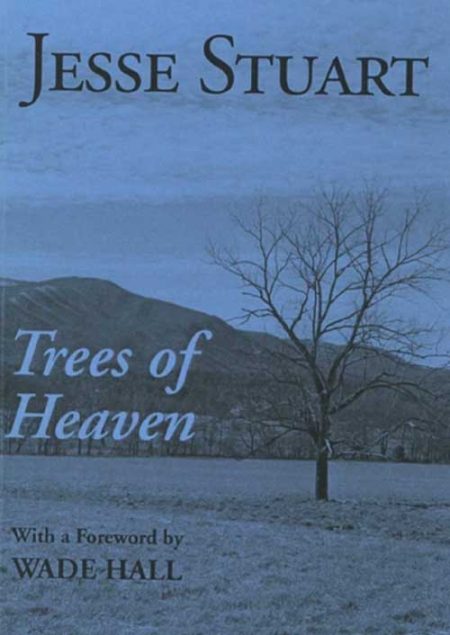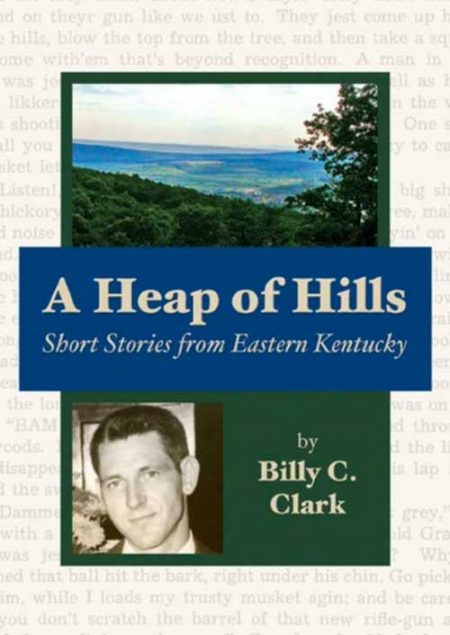-
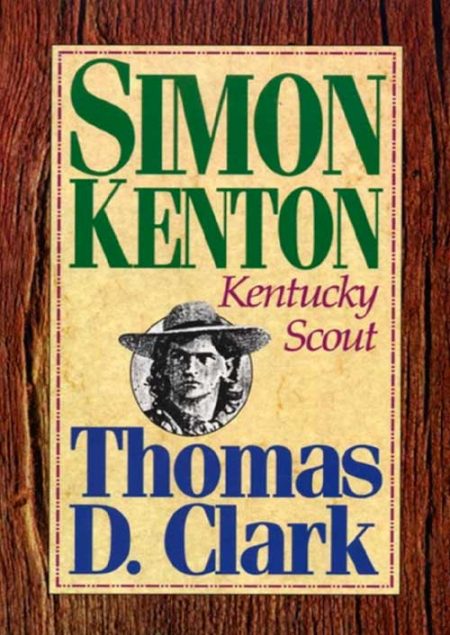 No part of American history is more exciting than the 1770s, when Europeans first settled west of the Appalachian mountains in the land now known as Kentucky. Simon Kenton’s story is synonymous with the story of that era. His life of excitement, adventure, and danger on the frontier made him one of the leading heroes of that time and, eventually a Kentucky legend. By Thomas D. Clark
No part of American history is more exciting than the 1770s, when Europeans first settled west of the Appalachian mountains in the land now known as Kentucky. Simon Kenton’s story is synonymous with the story of that era. His life of excitement, adventure, and danger on the frontier made him one of the leading heroes of that time and, eventually a Kentucky legend. By Thomas D. Clark -
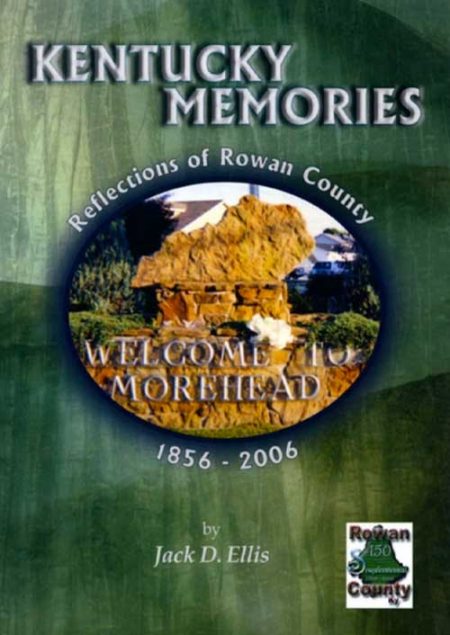 "In Kentucky Memories: Reflections of Rowan County, Jack Ellis has demonstrated an awareness of the important role of local history. During the past century-and-a-half, the human population of this amoeba-like area, carved out of Fleming and Morgan Counties, has matured into an Appalachian folk, cultural, economic, educational, and medical center. Literally scores of people have contributed both positively and negatively to the history of this community, and each of their acts in some form or another should remain as a record of their presence and activities. In the same way, every important human act documenting the past should should be passed on to future generations as a foundation for its presence and actions." — Dr. Thomas D. Clark HARDCOVER By Jack D. Ellis
"In Kentucky Memories: Reflections of Rowan County, Jack Ellis has demonstrated an awareness of the important role of local history. During the past century-and-a-half, the human population of this amoeba-like area, carved out of Fleming and Morgan Counties, has matured into an Appalachian folk, cultural, economic, educational, and medical center. Literally scores of people have contributed both positively and negatively to the history of this community, and each of their acts in some form or another should remain as a record of their presence and activities. In the same way, every important human act documenting the past should should be passed on to future generations as a foundation for its presence and actions." — Dr. Thomas D. Clark HARDCOVER By Jack D. Ellis -
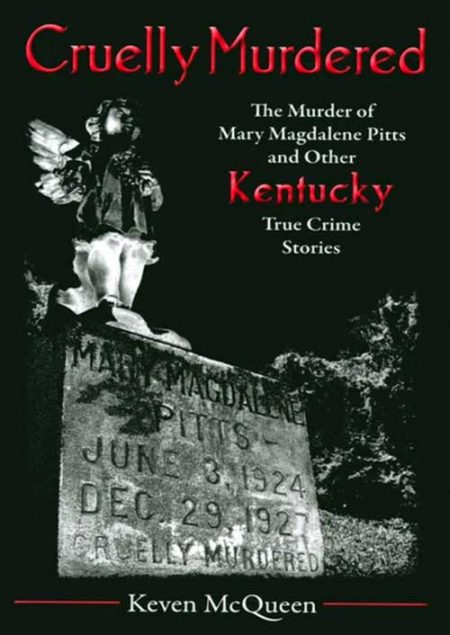 Cruelly Murdered: The Murder of Mary Magdalene Pitts and Other Kentucky True Crime Stories: In this follow-up to Murder in Old Kentucky, Keven McQueen presents detailed and thoroughly researched true crime stories from Kentucky history, spanning in time from the state's early history to the Roaring Twenties. The stories include the case of the governor's son who was tried for murder five tmes and eventually pardoned by his father; Edward Hawkins, a murderer on the move with a pronounced taste for bigamy; the 1883 shooting of a promising young Louisville artist; the infamous 1887 murder of Jennie Bowman, a Louisville maid, by two burglars; and the abuse and murder of three-year-old Mary Magdalene Pitts of Greenup County by her father and a housekeeper, still one of Kentucky's most notorious crimes. SOFTBACK By Keven McQueen
Cruelly Murdered: The Murder of Mary Magdalene Pitts and Other Kentucky True Crime Stories: In this follow-up to Murder in Old Kentucky, Keven McQueen presents detailed and thoroughly researched true crime stories from Kentucky history, spanning in time from the state's early history to the Roaring Twenties. The stories include the case of the governor's son who was tried for murder five tmes and eventually pardoned by his father; Edward Hawkins, a murderer on the move with a pronounced taste for bigamy; the 1883 shooting of a promising young Louisville artist; the infamous 1887 murder of Jennie Bowman, a Louisville maid, by two burglars; and the abuse and murder of three-year-old Mary Magdalene Pitts of Greenup County by her father and a housekeeper, still one of Kentucky's most notorious crimes. SOFTBACK By Keven McQueen -
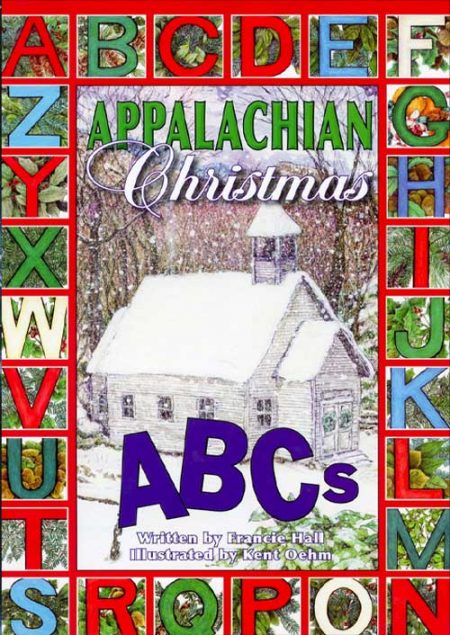 Laced throughout the litany of letters on this celebratory alphabet book is the meaning of Christmas with an Appalachian twist. Exploring the whimsy and worship of Yuletide in the mountains, each letter captures a glimpse of the traditions, food, and frolicking shared by family and friends. Incorporating a legend about the animals around the manger, a program with angels announcing God's glory, and choirs softly singing carols, this A-to-Z book for all ages will become a new Christmas tradition for families who gather around the tree each December. By Francie Hall Illustrated by Kent Oehm
Laced throughout the litany of letters on this celebratory alphabet book is the meaning of Christmas with an Appalachian twist. Exploring the whimsy and worship of Yuletide in the mountains, each letter captures a glimpse of the traditions, food, and frolicking shared by family and friends. Incorporating a legend about the animals around the manger, a program with angels announcing God's glory, and choirs softly singing carols, this A-to-Z book for all ages will become a new Christmas tradition for families who gather around the tree each December. By Francie Hall Illustrated by Kent Oehm -
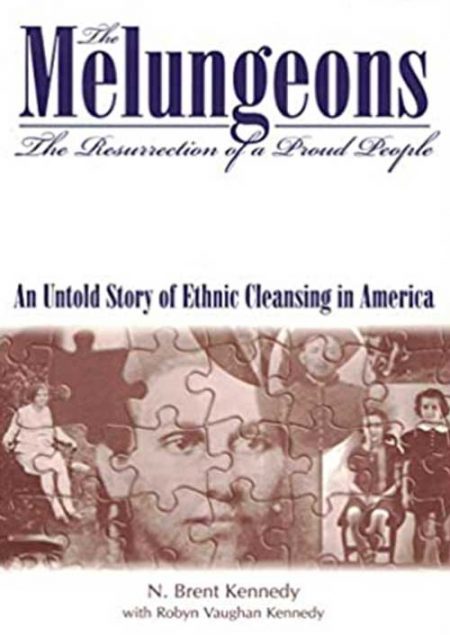 As early as 1654, English and French explorers in the southern Appalachians reported seeing dark-skinned, brown- and blue-eyed, and European-featured people speaking broken Elizabethan English, living in cabins, tilling the land, smelting silver, practicing Christianity, and, most perplexing of all, claiming to be Portyghee. Declared free persons of color in the late 1700s by the English and Scottish-Irish immigrants, the Melungeons, as they were known, were driven off their lands and denied voting rights, education, and the right to judicial process. The law was enforced mercilessly and sometimes violently in the resoundingly successful effort to totally disenfranchise these earliest American settlers. SOFTBACK VERSION By Brent Kennedy
As early as 1654, English and French explorers in the southern Appalachians reported seeing dark-skinned, brown- and blue-eyed, and European-featured people speaking broken Elizabethan English, living in cabins, tilling the land, smelting silver, practicing Christianity, and, most perplexing of all, claiming to be Portyghee. Declared free persons of color in the late 1700s by the English and Scottish-Irish immigrants, the Melungeons, as they were known, were driven off their lands and denied voting rights, education, and the right to judicial process. The law was enforced mercilessly and sometimes violently in the resoundingly successful effort to totally disenfranchise these earliest American settlers. SOFTBACK VERSION By Brent Kennedy -
Out of stock
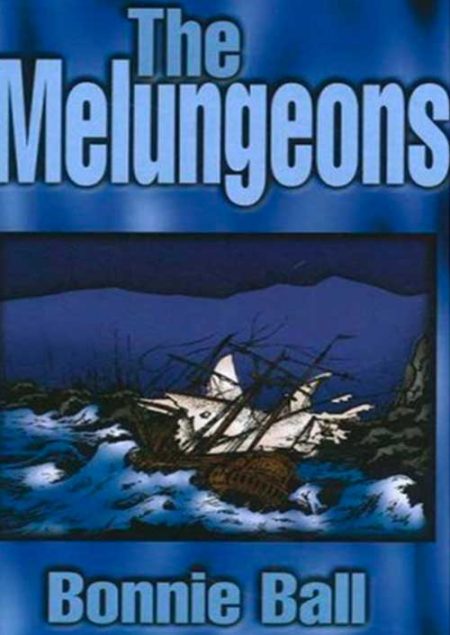 This thorough ethnological study is both scholarly and highly readable. In it the author objectively traces the roots of one of America’s more obscure peoples, the Melungeons. SOFTBACK VERSION By Bonnie Ball
This thorough ethnological study is both scholarly and highly readable. In it the author objectively traces the roots of one of America’s more obscure peoples, the Melungeons. SOFTBACK VERSION By Bonnie Ball -
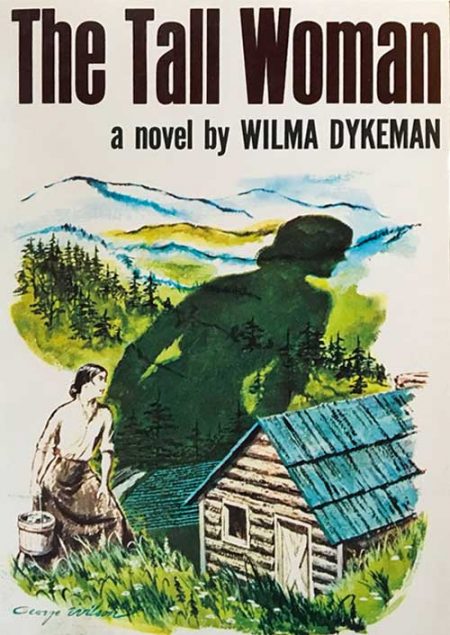 Lydia Moore grew up in the Appalachian region before the Civil War and married Mark McQueen shortly after it began. Her husband went off to fight for the Union while her father and brother fought for the Confederates. While the men were gone, outliers raided Lydia's mother's home, assaulting her and stealing the livestock. SOFTBACK VERSION By Wilma Dykeman
Lydia Moore grew up in the Appalachian region before the Civil War and married Mark McQueen shortly after it began. Her husband went off to fight for the Union while her father and brother fought for the Confederates. While the men were gone, outliers raided Lydia's mother's home, assaulting her and stealing the livestock. SOFTBACK VERSION By Wilma Dykeman -
 It is the mid-1700s, and England’s colonists in North America are eager to explore and settle the forest frontier west of the Appalachian mountains. This is the setting of the new book (2021), “Blood and Treasure.” The guide to this epic narrative is America’s first pathfinder, Daniel Boone – not the coonskin cap-wearing caricature of popular culture, but the flesh-and-blood frontiersman and Revolutionary War hero whose explorations would become the stuff of legend. HARDBACK VERSION By Bob Drury and Tom Clavin
It is the mid-1700s, and England’s colonists in North America are eager to explore and settle the forest frontier west of the Appalachian mountains. This is the setting of the new book (2021), “Blood and Treasure.” The guide to this epic narrative is America’s first pathfinder, Daniel Boone – not the coonskin cap-wearing caricature of popular culture, but the flesh-and-blood frontiersman and Revolutionary War hero whose explorations would become the stuff of legend. HARDBACK VERSION By Bob Drury and Tom Clavin -
 The Appalachian Trail is America’s most beloved trek, with millions of hikers setting foot on it every year. Yet few are aware of the fascinating backstory of the dreamers and builders who helped bring it to life over the past century. The conception and building of the Appalachian Trail is a story of unforgettable characters who explored it, defined it, and captured national attention by hiking it. From Grandma Gatewood—a mother of eleven who thru-hiked in canvas sneakers and a drawstring duffle—to Bill Bryson, author of the best-selling A Walk in the Woods, the AT has seized the American imagination like no other hiking path. The 2,000-mile-long hike from Georgia to Maine is not just a trail through the woods, but a set of ideas about nature etched in the forest floor. This character-driven biography of the trail is a must-read not just for ambitious hikers, but for anyone who wonders about our relationship with the great outdoors and dreams of getting away from urban life for a pilgrimage in the wild. HARDBACK VERSION Philip D'Anieri
The Appalachian Trail is America’s most beloved trek, with millions of hikers setting foot on it every year. Yet few are aware of the fascinating backstory of the dreamers and builders who helped bring it to life over the past century. The conception and building of the Appalachian Trail is a story of unforgettable characters who explored it, defined it, and captured national attention by hiking it. From Grandma Gatewood—a mother of eleven who thru-hiked in canvas sneakers and a drawstring duffle—to Bill Bryson, author of the best-selling A Walk in the Woods, the AT has seized the American imagination like no other hiking path. The 2,000-mile-long hike from Georgia to Maine is not just a trail through the woods, but a set of ideas about nature etched in the forest floor. This character-driven biography of the trail is a must-read not just for ambitious hikers, but for anyone who wonders about our relationship with the great outdoors and dreams of getting away from urban life for a pilgrimage in the wild. HARDBACK VERSION Philip D'Anieri -
 Presidents have been visiting Kentucky since 1819 arriving by horseback, carriage, train, steamboat, bus, and airplane. Presidential Visits to Kentucky: 1819-2017 details more than 120 occasions when the President of the United States came to the Commonwealth. It chronicles when the president came, why, where he went, and who he saw as he made history. HARDBACK VERSION By Wayne Onkst
Presidents have been visiting Kentucky since 1819 arriving by horseback, carriage, train, steamboat, bus, and airplane. Presidential Visits to Kentucky: 1819-2017 details more than 120 occasions when the President of the United States came to the Commonwealth. It chronicles when the president came, why, where he went, and who he saw as he made history. HARDBACK VERSION By Wayne Onkst -
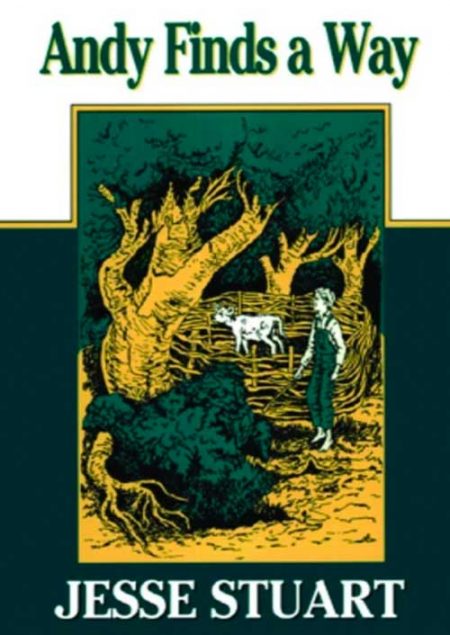 Jesse Stuart Junior Book Even though he lived on a farm and had had a number of pet animals, Andy Scott had never been able to keep a pet very long. Then Gypsy, the family cow, had a calf. Andy called him Soddy, because he was the color of the plowed clay ground. He hoped to keep the calf as a pet. Andy's father told him Soddy would have to be sold for veal, but Andy was determined to save his new friend and playmate. Filled with love for the calf, yet knowing his parents needed the money, Andy thought of a plan to suit everyone. SOFTBACK By Jesse Stuart
Jesse Stuart Junior Book Even though he lived on a farm and had had a number of pet animals, Andy Scott had never been able to keep a pet very long. Then Gypsy, the family cow, had a calf. Andy called him Soddy, because he was the color of the plowed clay ground. He hoped to keep the calf as a pet. Andy's father told him Soddy would have to be sold for veal, but Andy was determined to save his new friend and playmate. Filled with love for the calf, yet knowing his parents needed the money, Andy thought of a plan to suit everyone. SOFTBACK By Jesse Stuart -
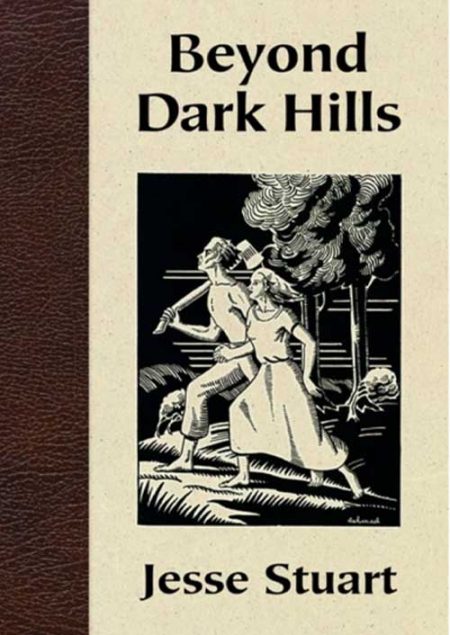 Jesse Stuart began this book in 1932 at Vanderbilt University as a paper for an English professor who asked his seminar students to turn in a maximum of 18 typewritten ages. In the 11 days allotted for the assignment, Stuart crammed 322 pages with the story of his young life. These ageless, universal experiences were told by a vibrant, precocious young man who became one of the most widely read American authors of the 20th century. For the young reader who has yet to experience the transition from childhood to adulthood, this book can be an inspiring guide. For older readers, it may be a beautiful trip down memory lane. HARDBACK By Jesse Stuart
Jesse Stuart began this book in 1932 at Vanderbilt University as a paper for an English professor who asked his seminar students to turn in a maximum of 18 typewritten ages. In the 11 days allotted for the assignment, Stuart crammed 322 pages with the story of his young life. These ageless, universal experiences were told by a vibrant, precocious young man who became one of the most widely read American authors of the 20th century. For the young reader who has yet to experience the transition from childhood to adulthood, this book can be an inspiring guide. For older readers, it may be a beautiful trip down memory lane. HARDBACK By Jesse Stuart -
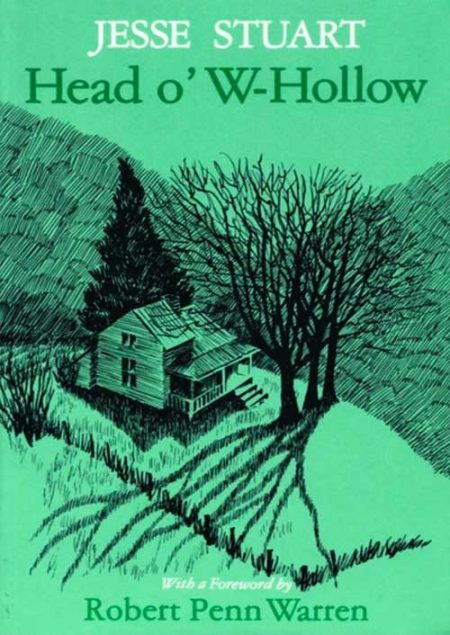 A unique and personal book bound for its own kind of immortality. Head o' W-Hollow has a permanent if modest historical value. Jesse Stuart has a "rattrap memory" for turns of speech, and he has given a socio-historical record of daily life in his remote world — now so much less remote and more changed. By Jesse Stuart REVIEWS "Stuart's first book of short stories remains haunting, powerful, and humorous." "A unique book, bound for its own kind of immortality." — Robert Penn Warren "The most honest writing that has ever been done about Kentucky mountain people." — The Nation
A unique and personal book bound for its own kind of immortality. Head o' W-Hollow has a permanent if modest historical value. Jesse Stuart has a "rattrap memory" for turns of speech, and he has given a socio-historical record of daily life in his remote world — now so much less remote and more changed. By Jesse Stuart REVIEWS "Stuart's first book of short stories remains haunting, powerful, and humorous." "A unique book, bound for its own kind of immortality." — Robert Penn Warren "The most honest writing that has ever been done about Kentucky mountain people." — The Nation -
Out of stock
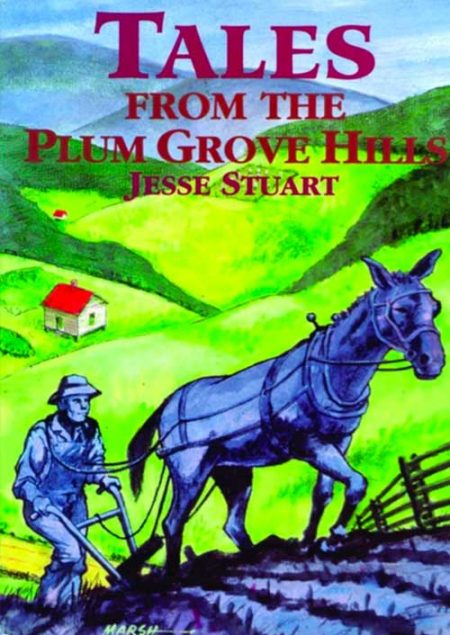 Jesse Stuart's honest, earthy writing about the southern hill folk he knows so well has made him one of America's foremost authors of fiction. Here are twenty of his best stories that spring up from the pungent soil of Kentucky, told in his plain but highly colorful style. Stories about the Stuart family and neighbors from his beloved W-Hollow, all packed with Kentucky characters of all sorts and sizes. By Jesse Stuart
Jesse Stuart's honest, earthy writing about the southern hill folk he knows so well has made him one of America's foremost authors of fiction. Here are twenty of his best stories that spring up from the pungent soil of Kentucky, told in his plain but highly colorful style. Stories about the Stuart family and neighbors from his beloved W-Hollow, all packed with Kentucky characters of all sorts and sizes. By Jesse Stuart -
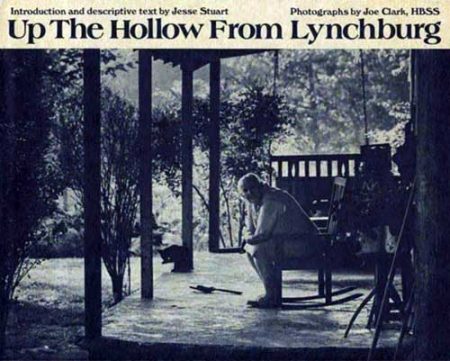 Jesse Stuart and Joe Clark's photographic essay of the town Lynchburg, located where the Blue Grass country meets the Cumberland Mountains of Tennessee. Known for the Jack Daniels distillery, the townspeople are loyal to their employer and to each other. But they are also "close-to-the-land" people who farm, raise livestock, and enjoy diversions which have nothing at all to do with the distillery. For the most part, it is their lives outside of working hours that Clark and Stuart have chosen to reflect. Photographs by Joe Clark Foreword by Jesse Stuart
Jesse Stuart and Joe Clark's photographic essay of the town Lynchburg, located where the Blue Grass country meets the Cumberland Mountains of Tennessee. Known for the Jack Daniels distillery, the townspeople are loyal to their employer and to each other. But they are also "close-to-the-land" people who farm, raise livestock, and enjoy diversions which have nothing at all to do with the distillery. For the most part, it is their lives outside of working hours that Clark and Stuart have chosen to reflect. Photographs by Joe Clark Foreword by Jesse Stuart -
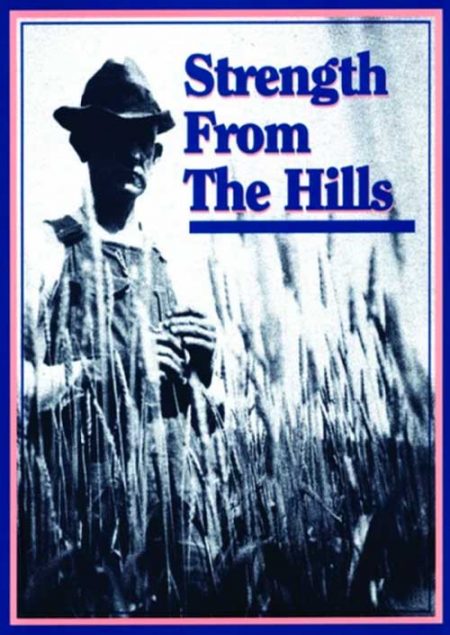 A biography of Jesse's father, Mitchell Stuart - a rural man who could not read or write. But Mick Stuart had learned the important things in life from the hills around him. He began his work before daylight, and stopped only when his family, his farm, and his animals were cared for. Jesse Stuart tells how his father taught him the unalterable values of right and wrong, love of family, and love of education. By Jesse Stuart
A biography of Jesse's father, Mitchell Stuart - a rural man who could not read or write. But Mick Stuart had learned the important things in life from the hills around him. He began his work before daylight, and stopped only when his family, his farm, and his animals were cared for. Jesse Stuart tells how his father taught him the unalterable values of right and wrong, love of family, and love of education. By Jesse Stuart -
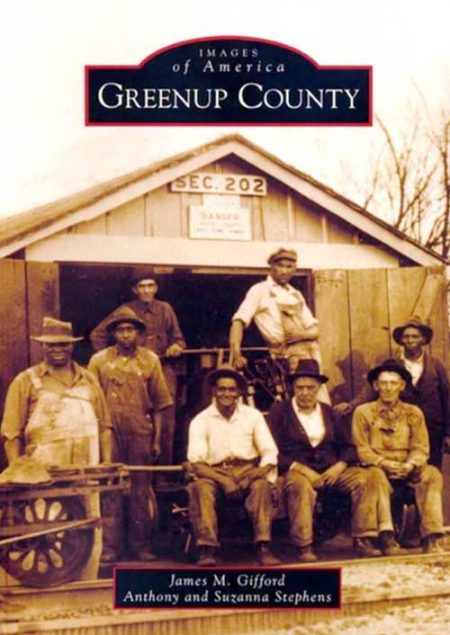 Greenup County, bordering the Ohio River in northeastern Kentucky, is rich in history and culture. Settlers first arrived in the mid-1700s and carved farms from hardwood forests. Lucy Virgin Downs, the first white child born west of the Alleghenies, lived in Greenup County, as did Jesse Boone, brother of Kentucky icon Daniel Boone. The 20th century brought industrialization and economic diversification to the historically agricultural area. Ashland Oil, a Fortune 500 company, maintained corporate headquarters in Greenup County. Two steel mills, a large rail yard, an excellent hospital, and a number of surface mines also provided employment to many people who continued to work their family farms, too. This economic progress was mirrored in every aspect of country life as education, health care, and recreation all improved dramatically. Today Greenup County’s history is appreciated by both longtime residence and cultural tourists. James M. Gifford serves as chief executive and senior editor of the Jesse Stuart Foundation, a regional publishing house. Dr. Gifford’s coauthors, Anthony and Suzanna Stephens, are eastern Kentuckians. The authors gathered photographs from dozens of personal and library collections.SOFTBACK By James M. Gifford, Anthony and Suzanna Stephens
Greenup County, bordering the Ohio River in northeastern Kentucky, is rich in history and culture. Settlers first arrived in the mid-1700s and carved farms from hardwood forests. Lucy Virgin Downs, the first white child born west of the Alleghenies, lived in Greenup County, as did Jesse Boone, brother of Kentucky icon Daniel Boone. The 20th century brought industrialization and economic diversification to the historically agricultural area. Ashland Oil, a Fortune 500 company, maintained corporate headquarters in Greenup County. Two steel mills, a large rail yard, an excellent hospital, and a number of surface mines also provided employment to many people who continued to work their family farms, too. This economic progress was mirrored in every aspect of country life as education, health care, and recreation all improved dramatically. Today Greenup County’s history is appreciated by both longtime residence and cultural tourists. James M. Gifford serves as chief executive and senior editor of the Jesse Stuart Foundation, a regional publishing house. Dr. Gifford’s coauthors, Anthony and Suzanna Stephens, are eastern Kentuckians. The authors gathered photographs from dozens of personal and library collections.SOFTBACK By James M. Gifford, Anthony and Suzanna Stephens -
 Jesse Stuart was a paradox. For a period of his life, Jesse slept with a loaded gun under his pillow, yet he also carried a typewriter with him wherever he went. He courted woman with mud on his boots and pistols on his hips, but he had wildflowers in his hands and envelops completely covered with chicken-scratched poems in his pockets. He was petty yet often kind, mean-spirited but truly helpful to beginning writers, clannish yet hospitable to visitors HARDBACK By James M. Gifford
Jesse Stuart was a paradox. For a period of his life, Jesse slept with a loaded gun under his pillow, yet he also carried a typewriter with him wherever he went. He courted woman with mud on his boots and pistols on his hips, but he had wildflowers in his hands and envelops completely covered with chicken-scratched poems in his pockets. He was petty yet often kind, mean-spirited but truly helpful to beginning writers, clannish yet hospitable to visitors HARDBACK By James M. Gifford -
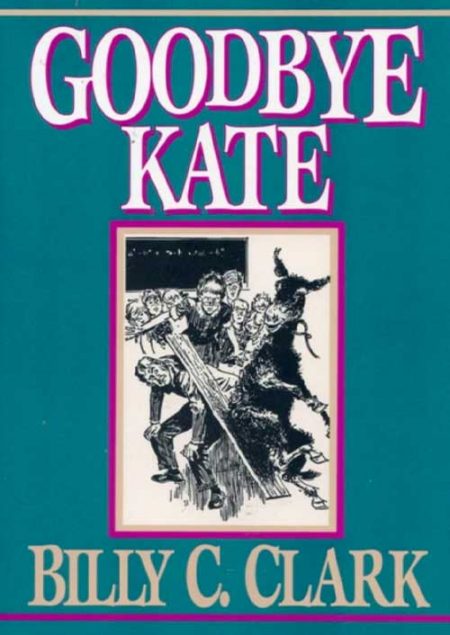 Goodbye Kate, Billy C. Clark’s sixth novel, is based in part on a mule he once owned. In the novel, Kate is found far back in the hills by a lonely country boy named Isaac Warfield. He lives close enough to Tatesburg, the nearest town, to walk to school there, but it’s a small town, and his home is isolated. Isaac has graduated from the little country school he has attended and the other members of his class will be moving on to another school, or to no school at all. He won’t have much contact with his friends anymore, and the nearest neighbor, a money-hungry man named Simm Johns, has no children and is “mean as a striped snake.” Isaac finds Kate when he goes back into the hills to pick some blackberries for his mother. The little mule is apparently as lonely as Isaac is, and she adopts him and follows him home – as far as the pine grove above the house, that is. By Billy C. Clark
Goodbye Kate, Billy C. Clark’s sixth novel, is based in part on a mule he once owned. In the novel, Kate is found far back in the hills by a lonely country boy named Isaac Warfield. He lives close enough to Tatesburg, the nearest town, to walk to school there, but it’s a small town, and his home is isolated. Isaac has graduated from the little country school he has attended and the other members of his class will be moving on to another school, or to no school at all. He won’t have much contact with his friends anymore, and the nearest neighbor, a money-hungry man named Simm Johns, has no children and is “mean as a striped snake.” Isaac finds Kate when he goes back into the hills to pick some blackberries for his mother. The little mule is apparently as lonely as Isaac is, and she adopts him and follows him home – as far as the pine grove above the house, that is. By Billy C. Clark -
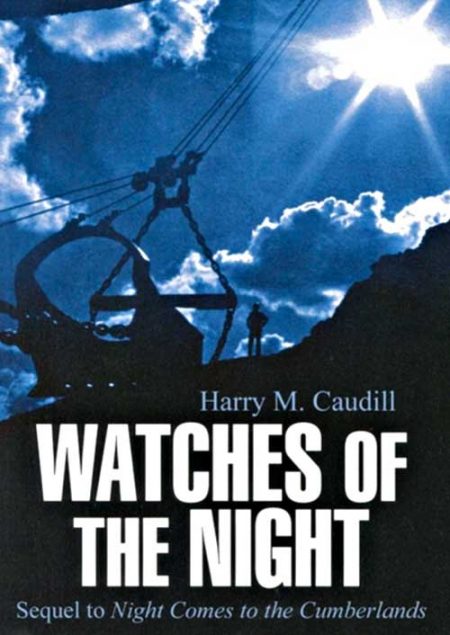 In 1963, Harry M. Caudill published his now classic account of the reckless, deliberate despoliation of the Appalachian Plateau, Night Comes to the Cumberlands. Thirteen years later, in The Watches of the Night, Caudill continued the heartbreaking story of an incredibly rich land inhabited by a grindingly poor people whose problems, despite state and local aid and an unprecedented boom in coal, had worsened: the land was being stripped more rapidly than ever; the people’s traditional relationship with the land was being uprooted, and their old customs eliminated by standardization Both a narrative history and a polemic against greed and waste, The Watches of the Night hammers at “the profligacy growing out of the persistent myth of superabundance.” The author ponders an even darker future if the cycle of boom and bust is not broken. He writes: “Americans have never understood or respected the finely textured, little-hill terrain of the Cumberland Plateau.” Neither the farmers nor the miners who followed the early pioneers saw it as a place cherish. Through decades that have lengthened to nearly two centuries the land has fought back, sometimes with savage floods and always with persistent efforts to reforest. “But now times runs out and our “inexhaustible” resources have turned finite….The Kentucky Cumberlands are many things, but most of all they are a warning.” By Harry M. Caudill
In 1963, Harry M. Caudill published his now classic account of the reckless, deliberate despoliation of the Appalachian Plateau, Night Comes to the Cumberlands. Thirteen years later, in The Watches of the Night, Caudill continued the heartbreaking story of an incredibly rich land inhabited by a grindingly poor people whose problems, despite state and local aid and an unprecedented boom in coal, had worsened: the land was being stripped more rapidly than ever; the people’s traditional relationship with the land was being uprooted, and their old customs eliminated by standardization Both a narrative history and a polemic against greed and waste, The Watches of the Night hammers at “the profligacy growing out of the persistent myth of superabundance.” The author ponders an even darker future if the cycle of boom and bust is not broken. He writes: “Americans have never understood or respected the finely textured, little-hill terrain of the Cumberland Plateau.” Neither the farmers nor the miners who followed the early pioneers saw it as a place cherish. Through decades that have lengthened to nearly two centuries the land has fought back, sometimes with savage floods and always with persistent efforts to reforest. “But now times runs out and our “inexhaustible” resources have turned finite….The Kentucky Cumberlands are many things, but most of all they are a warning.” By Harry M. Caudill -
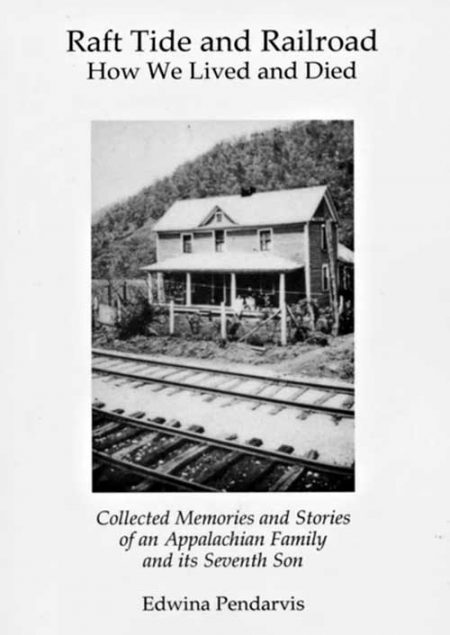 In this family history, “Raft Tide and Railroad: How We Lived and Died — Collected Memories and Stories of an Appalachian Family and Its Seventh Son,” Appalachian author, poet, and editor Dr. Edwina Pendarvis, was guided by sage advice from a grandmother, Jet Johnson, known only to her through family stories and photographs. Not long before Johnson was murdered, she asked one of her sons to note the strength of a bundle of twigs – as opposed to an individual twig – and see it as a metaphor for family strength – a metaphor originated by an earlier Appalachian – the warrior Tecumseh. In “Raft Tide and Railroad,” the author has preserved her family’s history and recognized its strength through accounts that span seven generations of experiences in Virginia, Kentucky, and West Virginia from the early 1800s to the present. SOFTBACK VERSION By Edwina Pendarvis
In this family history, “Raft Tide and Railroad: How We Lived and Died — Collected Memories and Stories of an Appalachian Family and Its Seventh Son,” Appalachian author, poet, and editor Dr. Edwina Pendarvis, was guided by sage advice from a grandmother, Jet Johnson, known only to her through family stories and photographs. Not long before Johnson was murdered, she asked one of her sons to note the strength of a bundle of twigs – as opposed to an individual twig – and see it as a metaphor for family strength – a metaphor originated by an earlier Appalachian – the warrior Tecumseh. In “Raft Tide and Railroad,” the author has preserved her family’s history and recognized its strength through accounts that span seven generations of experiences in Virginia, Kentucky, and West Virginia from the early 1800s to the present. SOFTBACK VERSION By Edwina Pendarvis -
Out of stock
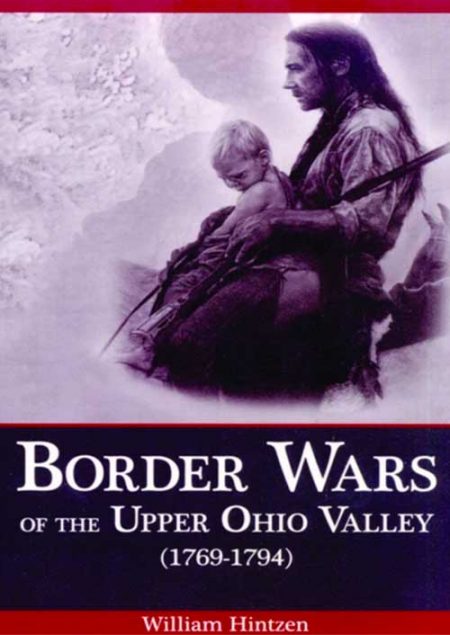 Border Wars of the Upper Ohio Valley is the story of the Trans-Allegheny movement in the quarter-century from 1769-1794. It embraces the area of the present United States from western Pennsylvania to the Mississippi, and from the Great Lakes southward into Tennessee. The story of this westward movement begins with the emigration of the Zane family from the South Branch of the Potomac River, from their home near Moorefield, in present Hardy County, West Virginia, to the mouth of Wheeling Creek in the panhandle of that state, and concludes with Anthony Wayne’s victory over the confederated Indian tribes at Fallen Timbers. William Hintzen’s book brings back the days of Daniel Boone, the Zane family (founders of Wheeling), Simon Kenton, Lewis Wetzel (Death Wind, as the Indians knew him), the 1777 siege of Fort Henry, the Girty brothers, Sam McCo9lloch, Betty Zane’s dash for gunpowder, the remarkable Wetzel family, Sam Brady, George Rogers Clark and Mad Anthony Wayne’s final victory at Fallen Timbers. By William Hintzen
Border Wars of the Upper Ohio Valley is the story of the Trans-Allegheny movement in the quarter-century from 1769-1794. It embraces the area of the present United States from western Pennsylvania to the Mississippi, and from the Great Lakes southward into Tennessee. The story of this westward movement begins with the emigration of the Zane family from the South Branch of the Potomac River, from their home near Moorefield, in present Hardy County, West Virginia, to the mouth of Wheeling Creek in the panhandle of that state, and concludes with Anthony Wayne’s victory over the confederated Indian tribes at Fallen Timbers. William Hintzen’s book brings back the days of Daniel Boone, the Zane family (founders of Wheeling), Simon Kenton, Lewis Wetzel (Death Wind, as the Indians knew him), the 1777 siege of Fort Henry, the Girty brothers, Sam McCo9lloch, Betty Zane’s dash for gunpowder, the remarkable Wetzel family, Sam Brady, George Rogers Clark and Mad Anthony Wayne’s final victory at Fallen Timbers. By William Hintzen -
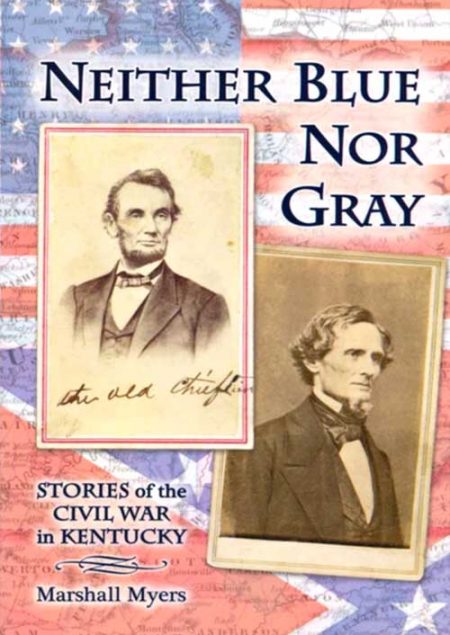 The Civil War affected the daily lives of almost everyone in the Commonwealth of Kentucky, a slave holding state that chose not to secede from the United States. Here are the untold stories of lesser known combatants or the folks back home who suffered in so many ways from the ravages of war. Seventeen chapters range in topics from interviews with former slaves to an examination of Mary Todd Lincoln's family's military involvement in the war. SOFTBACK By Marshall Myers
The Civil War affected the daily lives of almost everyone in the Commonwealth of Kentucky, a slave holding state that chose not to secede from the United States. Here are the untold stories of lesser known combatants or the folks back home who suffered in so many ways from the ravages of war. Seventeen chapters range in topics from interviews with former slaves to an examination of Mary Todd Lincoln's family's military involvement in the war. SOFTBACK By Marshall Myers -
 Following World War I, our nation entered a decade of national prosperity. Businesses flourished, and the standard of living rose. Jobs were plentiful and Americans were better fed, clothed, and housed than they had ever been before. However, the prosperity of the roaring twenties did not filter down to the rural poor of Appalachia. When Jack Ellis was born to Lon and Dot Ellis in 1927, the family lived near Morehead, Kentucky in a dilapidated, leaky, rat-infested house with no screens on the windows and one room that had a dirt floor. By the time Jack entered grade school, America was mired in the Great Depression. During the 30s, his father was employed by the Civilian Conservation Corp. for several years, but his mother became discouraged and depressed after losing her teaching position in the Rowan County schools. By Jack D. Ellis
Following World War I, our nation entered a decade of national prosperity. Businesses flourished, and the standard of living rose. Jobs were plentiful and Americans were better fed, clothed, and housed than they had ever been before. However, the prosperity of the roaring twenties did not filter down to the rural poor of Appalachia. When Jack Ellis was born to Lon and Dot Ellis in 1927, the family lived near Morehead, Kentucky in a dilapidated, leaky, rat-infested house with no screens on the windows and one room that had a dirt floor. By the time Jack entered grade school, America was mired in the Great Depression. During the 30s, his father was employed by the Civilian Conservation Corp. for several years, but his mother became discouraged and depressed after losing her teaching position in the Rowan County schools. By Jack D. Ellis -
 Morehead Memories recalls the struggle of a city and a county to advance from a raw, violent, feud filled region into a modern educational, commercial, cultural and medical center in Eastern Kentucky. The author uses interviews, documented research and personal memories to vividly tell the story of the people, places, institutions and events through which this marvelous transformation was accomplished. HARDBACK By Jack D. Ellis
Morehead Memories recalls the struggle of a city and a county to advance from a raw, violent, feud filled region into a modern educational, commercial, cultural and medical center in Eastern Kentucky. The author uses interviews, documented research and personal memories to vividly tell the story of the people, places, institutions and events through which this marvelous transformation was accomplished. HARDBACK By Jack D. Ellis -
 The Hunters of Kentucky: A Narrative History of America’s First Far West, 1750-1797 covers a wide range of frontier existence, from daily life and survival to wars, exploits, and even flora and fauna. The pioneers and their lives are profiled in biographical sketches, giving a rich sampling of the personalities involved in the United States' westward expansion. Author Ted Franklin Belue's colorful, vivid prose brings these long-forgotten frontiersmen to life. HARDBACK VERSION By Ted Franklin Belue
The Hunters of Kentucky: A Narrative History of America’s First Far West, 1750-1797 covers a wide range of frontier existence, from daily life and survival to wars, exploits, and even flora and fauna. The pioneers and their lives are profiled in biographical sketches, giving a rich sampling of the personalities involved in the United States' westward expansion. Author Ted Franklin Belue's colorful, vivid prose brings these long-forgotten frontiersmen to life. HARDBACK VERSION By Ted Franklin Belue -
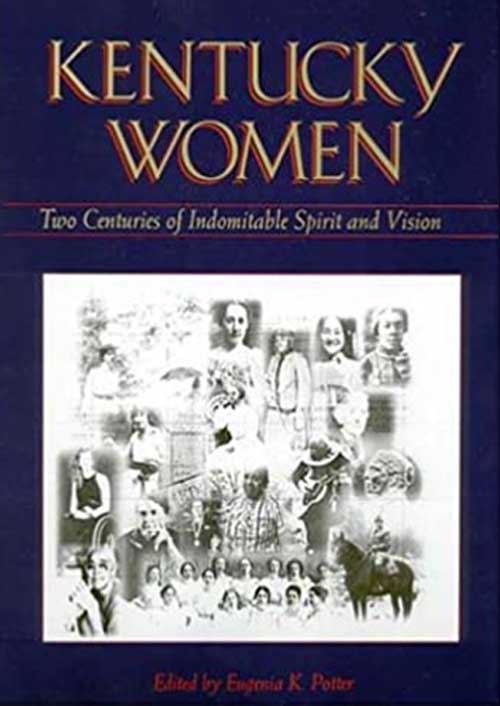 Look through the lens of this kaliedoscope of Kentucky women and prepare to be dazzled! The biographical essays of the 95 women featured in this book are as varied as the loose bits of colored glass in the kaleidoscope, and their stories are just as spellbinding. Thirty-one scholars and history aficionados who generously contributed essays to this book agree that women's contributions are part of this state's history and heritage. With its scrapbook of photographs and biographies, this book introduces only a symbolic few, an inspiring group who represent Kentucky Women. HARDBACK VERSION By Eugenia K. Potter
Look through the lens of this kaliedoscope of Kentucky women and prepare to be dazzled! The biographical essays of the 95 women featured in this book are as varied as the loose bits of colored glass in the kaleidoscope, and their stories are just as spellbinding. Thirty-one scholars and history aficionados who generously contributed essays to this book agree that women's contributions are part of this state's history and heritage. With its scrapbook of photographs and biographies, this book introduces only a symbolic few, an inspiring group who represent Kentucky Women. HARDBACK VERSION By Eugenia K. Potter -
 How to Build Your Dream Cabin in the Woods: The Ultimate Guide to Building and Maintaining a Backcountry Getaway This ultimate resource includes photos, blueprints, and diagrams, and covers the steps to constructing the cabin you've always wanted such as:
How to Build Your Dream Cabin in the Woods: The Ultimate Guide to Building and Maintaining a Backcountry Getaway This ultimate resource includes photos, blueprints, and diagrams, and covers the steps to constructing the cabin you've always wanted such as:- Selecting a site
- Gathering construction materials
- Deciding on a design that is right for you
- Managing your property
- Building add-ons, including shooting ranges, an outhouse, or an outside fire ring
- Installing cabin security
- And more!
-
 The Enduring Hills was the first of many novels Janice Holt Giles wrote in her lifetime. Based in part on her own experience with the Kentucky mountain country, this is the story of Hod Pierce, a young man who grows up on Piney Ridge, where generations of Pierces have made a living from stubborn soil. Hod loves his people and the land but longs for wider horizons, for more education, and for the freedom he imagines can be found in the outside world. It takes World War II to carry Hod away from the Ridge and out into the world, and it takes his city-bred wife to make Hod realize that Piney Ridge will always be home. SOFTBACK VERSION By Janice Holt Giles
The Enduring Hills was the first of many novels Janice Holt Giles wrote in her lifetime. Based in part on her own experience with the Kentucky mountain country, this is the story of Hod Pierce, a young man who grows up on Piney Ridge, where generations of Pierces have made a living from stubborn soil. Hod loves his people and the land but longs for wider horizons, for more education, and for the freedom he imagines can be found in the outside world. It takes World War II to carry Hod away from the Ridge and out into the world, and it takes his city-bred wife to make Hod realize that Piney Ridge will always be home. SOFTBACK VERSION By Janice Holt Giles


